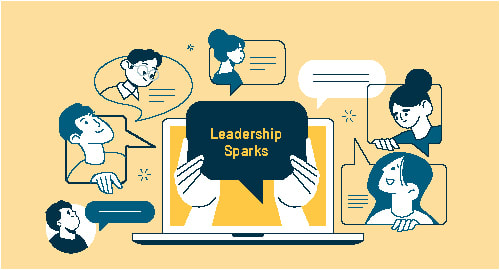
Feeling psychologically safe in the workplace has never been more important. The storm of the past two years has generated tidal waves of competing priorities and pressing demands, all vying for urgent attention. Hurricane-force winds of unrelenting and pervasive change continue to swirl around us. Without the critical lifeline of psychological safety, employees can feel as though they are drowning.
Leaders who create an environment of psychological safety do more than toss their people a life raft—they hop in alongside them and grab an oar of their own.
The Benefits of Psychological Safety
Cultivating a bedrock of psychological safety allows for honest communication. It creates a space where team members can feel safe enough to speak up—to share concerns, challenges, and questions with their leader and to voice when they are overwhelmed or burned out.
Conversely, an atmosphere depleted of psychological safety will foster secrecy and shame while the team member reports everything is fine—until they cannot pretend any longer. And who is usually left cleaning up the ensuing mess? The leader. Creating an environment where team members are secure enough to be candid can save the massive pain of rework, dropped balls, and valued employees leaving the organization.
Psychological safety is a requirement for innovation. When someone feels secure in their role with their team, and especially with their leader, it will translate into a greater willingness to take risks, think outside the box, expand beyond their comfort zone, and share creative ideas. In today’s fast-moving business world, this type of innovative ideation can be a game changer. It gives one permission to—in the words of Brené Brown—“dare greatly.”
Psychological safety is paramount to fostering a sense of community. We all know isolation is a pervasive and destructive force that can be especially acute in remote or hybrid teams. People need psychological safety to support one another and band together in solidarity and spirit. Deep-rooted connections with colleagues can act as a powerfully stabilizing force to protect morale and solidify loyalty across the team.
Best of all, psychological safety lets people be their best selves. When your team members feel safe, they can flourish—boldly sharing their most creative ideas, courageously and candidly talking about their workloads, and taking care of themselves and their teammates.
Model Psychological Safety
One of the most powerful ways to cultivate psychological safety with your people is to model it. A leader is like a master clock by which everyone else sets their watch. Your people listen to what you say, but, more importantly, they watch what you do. And what you do as a leader will be the single greatest determining factor of the level of psychological safety experienced by your team.
A critical aspect of this practice is to volunteer your own struggles, frustrations, fears, and failures. Talk about the experiences that shaped you as a leader. Tell people how you’ve grown from your challenges. Let them know what you’ve learned from your battles and what you’re still learning today.
Remember that trust can be counterintuitive; as a leader, you’ll often need to bravely gift it to someone before receiving it from them. Harness your own vulnerability as a superpower and watch it infuse every member of your team with safety, empowerment, and trust.
Have Regular Check-Ins
Another vital habit to promote psychological safety in the workplace is to check in regularly with your people. Make it a priority—and make it real. Don’t ask, “How are you doing?” Instead, ask, “How are you really doing?” Be willing to dive beneath the waterline to talk about their emotional climate. The depth of feelings shared will likely vary from person to person, and that’s okay. Meet people where they are. Allow your actions to intentionally communicate that you care about them as a person first; that you don’t see them as a human doing, but as a human being.
There’s a myriad of ways to do this other than in one-on-one meetings. For example, you can start a meeting with a slide that asks people to share how they are currently faring—kind of like an internal weather forecast. If people aren’t comfortable talking, they can share how they are feeling by picking an emoji. Cracking the door to meaningful dialogue can make all the difference in strengthening psychological safety.
Promote Wellness
Wellness and performance at work are closely linked—and a sense of well-being depends on psychological safety. That’s why, again, it is critical that you first model wellness behaviors in your own practices. A simple tactic is to start meetings five minutes past the hour and end them early, which gives people the permission to do this with their own schedules.
Remember that what you do is so much more important than what you preach. Don’t just tell people to take care of themselves; show them how you take care of yourself. Consider sharing a picture of yourself walking your dog in the middle of the day or eating lunch with your family.
Are you good about reminding your team members to unplug after work hours or during vacations? Here’s a harder one: do you send emails during off hours or on PTO days? Remember the master clock: everyone is watching you set the tone. Your people are going to imitate the example you set. Make it a sacred priority to share your wellness practices and witness how it liberates your team to do the same.
A Final Thought
Consider Maslow’s hierarchy of needs. The goal may be self-actualization—ascending the pyramid—but you can’t grab that elevator without first building out the lower levels. Psychological safety is the vital foundation of the entire structure, allowing for transformative growth, rich team connections, and powerful self-awareness.
As a leader, if you architect an environment of psychological safety, you are giving your people a spectacular gift. This gift will manifest in their attitude, sense of camaraderie, effectiveness, commitment to the team, and spirit of innovation. The world could certainly use more psychological safety these days, and it starts with leaders like you.
About the Author
More Content by Courtney Harrison










